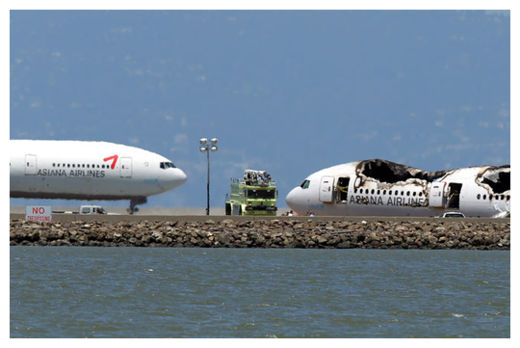
The short answer is probably, but that doesn't mean we should hand over control to computers altogether.
Although the technology giving jets the ability to land themselves has been around for decades, it's been limited to the military.
"When I was flying the F/A-18 Hornet, the level of automation made me step back and reevaluate my life," Missy Cummings, associate professor of aeronautics and astronautics and engineering systems director of the Humans and Automation Laboratory at MIT told DNews.
"The plane landed itself better on the carrier than I ever could."
She was convinced that the days of human pilots were numbered.
It hasn't happened because the technology has not moved into commercial airliners. Contrary to popular assumption, the autopilot systems on passenger jets do not handle take off, fly the plane completely and control the landing. In fact, these systems are designed to carry out orders, such as "maintain this heading" or "stay on this glide path."
Ultimately, it's up to the pilot to take off and land, and the pilot and co-pilot are also in the cockpit to compare what they see out the window with the instruments on the panel. A person is always better at some tasks than a computer, said Cummings, such as avoiding cells of thunderclouds and recognizing uncertain terrain.
But no one's perfect. An inexperienced pilot might make the mistake of not trusting a plane's automated systems and cutting the power to the engines too soon, which may have been what happened with the Asiana flight, said Cummings. A fully computerized system wouldn't make that mistake, as it could compare the instruments, the optimal path to the runway, and engine power within milliseconds and make corrections.
And that's one reason there has been some movement in the direction of autonomous aircraft.
The military has been developing unmanned autonomous aircraft, otherwise known as drones, for some years. But so far, they still require human intervention; they're remotely flown by ground-based operators.
And in England, the British National Air Traffic Services tested a remote-controlled passenger plane on a 500-mile hop from Lancashire to Inverness. Again, this plane was not fully autonomous. A pilot remained aboard the aircraft to do the take-off and landing and turned control over to a remote operator only after the plane was airborne.
Patrick Smith, an airline pilot and author of the "Ask the Pilot" blog (askthepilot.com), told Discovery News, "The proliferation of drones and UAVs causes people to extrapolate like this. But the differences between a drone and a commercial airliner are so vast that I cannot even begin to explain how untenable the idea of a pilotless passenger jet remains."
A drone over Afghanistan isn't a commercial flight with passengers, said Doug Davis, director of the Global Unmanned Aircraft Systems Strategic Initiatives program at New Mexico State University. A drone might get shot down or crash, but the reason drones are used to begin with is precisely that if they do, no pilots' lives are lost. There's also little civilian air traffic in a combat zone. "They operate in a sterile environment," he said.
In the end, pilots are still better at dealing with the unexpected.
"Its good that you get more reliability from the computer, but when you do have a mechanical failure, you want it to be dealt with by a proficient pilot," he said.



Reader Comments
to our Newsletter